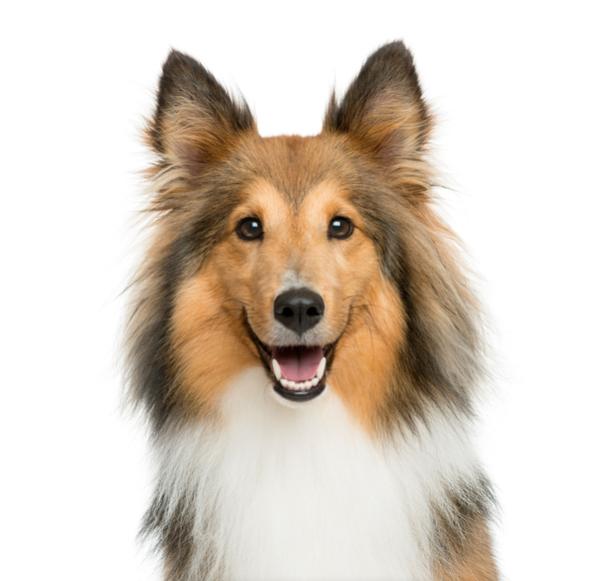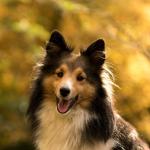Shetland Sheepdog

The Shetland Sheepdog, affectionately known as the Sheltie, is a small, but elegant dog breed. Similar in appearance to a rough Collie, their small size doesn't prevent them from being a tireless worker. Currently the Shetland sheepdog is more commonly found as a companion animal due to their beauty and size.
If you are thinking of adopting a Shetland Sheepdog, keep reading AnimalWised to find out everything you need to know about their characteristics, health, care, diet and more.
- Europe
- United Kingdom
- Group I
- 5-14
- 14-18
- 18-22
- 22-27
- 27-31
- More than 31
- 2-7
- 7-22
- 22-55
- 55-100
- 100-220
- 8-10
- 10-12
- 12-14
- 15-20
- Low
- Meidum
- High
Origin of the Shetland Sheepdog
Although the exact origin of the Shetland Sheepdog is uncertain, their first historic recognition was in records from the Scottish islands which bears the same name. Although the breed was not officially recognized until 1908, documents show they were known on the Shetland Isles at least as early as 1800.
The Sheltie arose from the crossing of several Collie-type dog breeds. We can say that the current Rough Collie breed ans the Shetland Sheepdog have common ancestors, but may not be as close in heritage as they look. The cold climate and sparse vegetation of the archipelago made it difficult for larger animals to survive. For this reason, it was smaller animals which tended to thrive. Livestock tended to be smaller due to the lack of larger predators. For this reason, larger shepherd dog breeds were not necessary and smaller dogs were preferred as they required less feeding.
Shelties were used to guide and protect dwarf breeds of sheep, cows and even chickens. For the same reasons the Shetland Sheepdog is robust, strong and highly intelligent. However, due to their good nature and beauty, they became commonly appreciated as a companion animal. This is such that not many Shelties are still employed as active working dogs, although there are some still used in such a capacity.
In the early 1900s, shelties were first featured in a dog show under the name Shetland Collies. Collie fans objected and the name was changed to the Shetland Sheepdog.
Characteristics of the Shetland Sheepdog
The Shetland Sheepdog is a small dog with long hair and great beauty. Their body is a little longer than they are tall, although they are well-proportioned. They have a deep chest with strong muscular legs, something very important in herding dogs. Their head resembles the Rough Collie with its refined shape and elongated snout. The Sheltie's eyes are set obliquely, are almond shaped and are almost always dark in color. The only exception is the merle-coat Shetland Sheepdog which can have one or both eyes light blue in color.
The Sheltie's tail is set low and long. It should never be carried over the back. Their fur is thick and curled slightly upwards at the end. Their coat is double-layered, with guard hairs being coarse, but smooth to the touch, and the undercoat is soft, dense and short. The accepted colors of the Shetland Sheepdog are as follows:
- Sable (light gold to dark mahogany)
- Tricolor
- Blue merle
- Black and white
- Black and tan
The average height at the withers for both male and female Shetland Sheepdogs is 33–41 cm (13–16"). The ideal weight is not mentioned in the official breed standard, but they tend to weight around 8 kg/17.5 lbs.
Shetland Sheepdog character
In general, shelties are good-natured dogs, loyal, intelligent and very affectionate with their human family. However, they tend to be rather shy around strangers and have strong herding instincts that can cause some conflict if they haven't received proper education.
Although important for all dogs, the socialization period is essential for Shelties to both prevent shyness and to ensure better behavior around strangers.
Shetland Sheepdog care
The Shetland Sheepdog's coat needs to be brushed a minimum of once or twice a week. Despite being long-haired, Shetland Sheepdogs tend to be neat and their coat does not tangle as easily as some similar breeds.
A Sheltie's coat needs brushed once or twice a week minimum. Despite being longhaired, their coat does not tangle as easily as some other breeds. Although they are small dogs, the Shetland Sheepdog needs sufficient physical and mental stimulation. Sufficient daily walks and play sessions may be enough, but canine sports are encouraged. Mental stimulation including intelligence games are vital to avoid possible stress, boredom or anxiety.
Shelties can live in apartments as long as they receive the necessary exercise. We also need to remember they can cope better than some in temperate to cold climates. They shouldn't be left alone outside for long periods as they need to be in the company of their families.
Shetland Shepherd education and training
As we have said in previous sections, Shetland Sheepdogs are very intelligent dogs. They learn both easily and quickly. However, their intelligence means they require more than simple basic dog training. When insufficiently stimulated, they will develop insecurities and behavioral problems. The same will happen if they receive negative reinforcement. Not only will this lead to behavioral issues, but it will weaken the bond between dog and guardian.
Among common behavioral problems in Shelties are those related to their herding instincts. For example, they tend to be very vocal dogs. They also often try to herd other animals or even people in their family. They can do this by nipping at the heels of people. These behaviors are difficult to prevent due to their genetic inheritance, but they can be redirected into more positive behaviors or harmless games.
Shetland Sheepdogs can make excellent companion animals when cared for appropriately. They generally get along well with children, but can be threatened by larger animals due to their small stature.
Shetland Shepherd health
The Shetland Sheepdog is predisposed to a number of inherited diseases, including the following:
- Dermatomyositis
- Collie eye anomaly (CEA)
- Progressive retinal atrophy
- waterfalls
- Hemophilia
- Legg-Calvé-Perthes disease
- Patella luxation
- Deafness
- Epilepsy
- Von Willebrand disease
- Hip dysplasia
Hip dysplasia is most common in larger dog breeds, but the breeding of the Sheltie has resulted in it being a common health disorder for the animal. To prevent their development or detect any of the above conditions in time, it is essential to visit the veterinarian periodically, as well as to administer the relevant vaccines and deworming schedules to the Sheltie.
Shetland Sheepdog photos




















